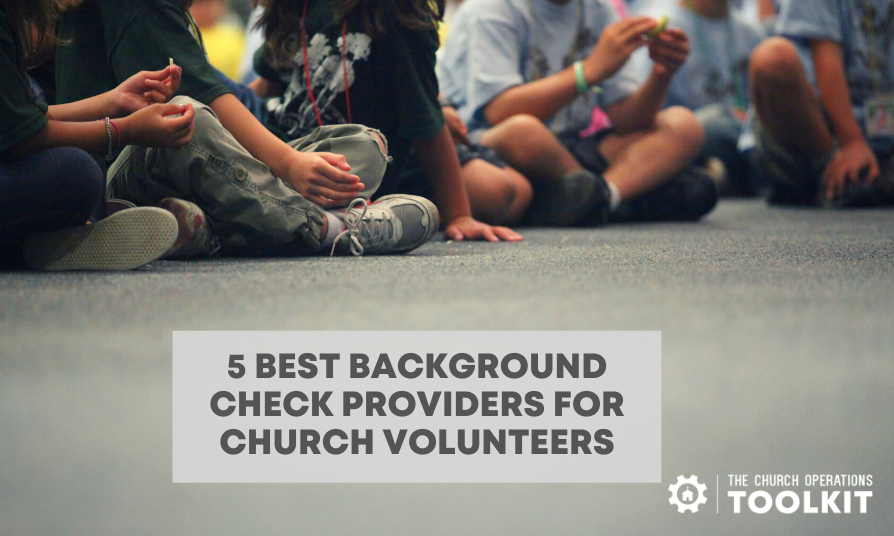Church leaders have a responsibility to take appropriate measures to protect the congregation and the church. One tool you can use to accomplish this is a risk assessment. The practice of completing a risk assessment exercise will encourage leaders to think through risks and identify ways to mitigate them.
A risk assessment should include the following:
- Definition of the risk
- Examples of what could happen should the risk occur
- Steps to prevent a risk from happening
- Actions that could reduce the impact should a risk event occur.
The following is an excerpt from my book, Protect the Vision: A Practical Guide to Church Risk Management. This excerpt covers a high-level risk assessment specifically regarding church safety and security. Other risks addressed in the book include:
- Staffing issues
- Data loss or theft
- Moral failure of senior leadership
- Theft, fraud, or mismanagement of church funds
- …and several more.
Risk definition
This risk includes anything that could cause physical harm to someone while on church property or while participating in a church-led event (even off church property). This includes seemingly little things such as cracks in the sidewalk or unsecured wires in the sanctuary to the potential for an active shooter situation or natural disaster. The main thing to consider here is what measures you are taking to protect those who are participating in church activities.
What could happen
- A visitor could fall on the church property, be injured, and sue the church for negligence.
- A member of the youth group could tear her ACL while on a church ski trip.
- A tornado siren could go off during service, causing panic and potential injuries or loss of life if staff members don’t properly direct people to a safe location.
- A disturbed individual could enter the building armed and start shooting; causing severe injuries and/or death.
- Any type of injury during a church-sponsored activity (whether on church property or not) can damage the church’s reputation. Even if the injury was outside of the church leader’s control, one’s preparation (or lack thereof) and response to that incident could be interpreted as incompetence or a lack of caring from not taking the time to prepare for such events.
How to prevent this risk from occurring
- Injuries
- Use good judgment regarding the types of activities you offer as a church. You can’t avoid all risk of injury, but don’t expose attendees to undue risk in order to “be extreme” or get attention.
- As you plan an event off-site, check on the safety and reputation of the place you’re going. If you’re taking the youth group on a camping trip, go visit the campsites and talk with the site management. Likewise, if you bring a bouncy-house onto your property, check on reviews of the vendor and its safety reputation.
- Obtain parental / guardian consent forms for each minor participating in an event. Please check with your church legal counsel regarding when they recommend you use these forms and to obtain the form content/language.
- Active shooter
- Post trained security personnel inside and outside your church buildings. Make sure these individuals are trained to spot suspicious behavior.
- Provide each security team members with a remote communications device (radio) so they can coordinate if something happens.
How to reduce the impact if this risk occurs
Develop an emergency response plan to address the following:
- Active shooter
- Criminal threats / actions
- Suspicious packages
- Protests or demonstrations
- Missing / lost child
- Arson
- Cyber crime
- Fire
- Medical emergency
- Tornados
- Ice storms
- Earthquakes
- Hurricanes
- Mudslides or landslides
- Wildfires
- Floods
- Infectious Disease
As you develop the plan, consider the following1:
- Significant assets and areas – each building on your church property, etc.
- First responders
- Perimeter security
- Entry access / controls
- Parking and delivery
- Barriers (large concrete planters in front of entrances to prevent someone from driving a vehicle into the building, etc.)
- Electronic security systems
- Lighting – inside and outside the building
- Security for those handling the offering
- Special events with high profile guests
- 911-call location – Is the phone system configured to alert the 911 operator of the call’s location within the building?
- Daycare and children’s areas
- How first responders can tell the difference between security personnel with guns versus perpetrators with guns (i.e. – use vest or large IDs for security personnel)
How to respond to injuries or medical emergencies:
- If someone suddenly passed out, had a seizure, or suffered a heart attack during service, do you have a plan for how to respond? Does your staff know to immediately call 911 and do you know who could offer first aid (CPR, etc.)?
- Who is responsible for meeting paramedics at the front door so they can be directed to the person who needs help?
- During what types of church events should you have an ambulance on-site in case of an emergency?
How to respond in the event of a natural disaster:
- Tornados:
- What will you do if tornado sirens go off during service?
- What are the safest rooms within your church to be in during a tornado?
- Is there enough space in those rooms to accommodate the number of people who could be in your building at any given time?
- How will you move people into those areas?
- Who will be in-charge of directing traffic?
- If the tornado hits church property, how will you reunite families after it’s over? Do you know which church members are professional medical personnel and could help treat the wounded until more help arrives? Where will your congregation meet if the building isn’t usable right away?
- Earthquakes:
- What are your plans for moving people to the safest places in your building during an earthquake?
- Is your building up to code for earthquakes?
- How will you reunite children with their parents after the quake ends?
- What will you do if the electricity goes out?
- Flooding:
- You’ll typically have more time to respond to a potential flood than other natural disasters, but you still need a plan.
- How will you get expensive equipment to higher ground?
- Who’s responsible for making that happen and making sure those items are in a safe place to prevent theft?
- Do you have flood insurance?
How to respond in an active shooter situation1:
- What security personnel must be present and when? Include whether you require off-duty, armed police officers or other armed / non-armed security personnel.
- Has the security team received training on how to look for and spot suspicious behavior? What actions have you authorized them to take?
- Have you provided armed security team members with a vest or other way to show first responders that they’re the “good guys?”
- Do you have a PA system throughout church property from which you could alert everyone of a dangerous situation? Who has access to that PA system? Note: You don’t want a system that you can only access from one room since a shooter could block access to that room.
- How will you to get your congregation to safety? How will you reunite parents and children?
- Have you reviewed your plan with local law enforcement and first responders?
- Do you know the doctors, nurses, police officers, paramedics, or firemen are within the congregation? Have you asked if they’d be willing to be called upon in the event of an emergency?
As you finalize these documents:
- Review plans with local first responders and other experts for their input.
- Train your staff and volunteers on each plan. Quiz them about the plans during a staff meeting or as they’re serving. “The tornado sirens go off…what do you do?” They should be able to respond confidently and immediately.
- Revisit your plans annually and update as needed. Also, if you add on to or renovate your church facility make sure you review and update plans accordingly.
- Discuss liability insurance with the church’s insurance agent. Find out what coverage the church has within the policy. If someone is injured or killed while participating in a church event, they or their family may sue the church for negligence. Are you covered with sufficient insurance should a judgment go against you or to cover legal fees even if you win the case?
Risk Assessment Tools and Resources
- Check with your insurance provider to see if they offer any tips or an evaluation of your response plans. They may offer those as a free service to help you reduce their exposure risk.
(1) Adapted from the 2014 WFX Conference Presentation, “Emergency Preparedness for Your Facility” by then Lieutenant Brad G. Fortune, Plano Police Department, Texas



